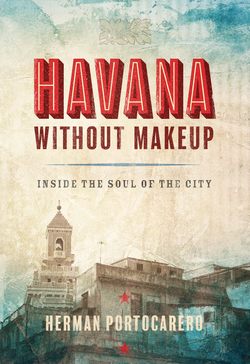Читать книгу Havana without Makeup - Herman Portocarero - Страница 20
На сайте Литреса книга снята с продажи.
Оглавление13.SEX & CENESEX
Bluntly put: if everyone had not slept with everyone else, Havana today would not be so racially diverse. As essentially a port city, Havana was notoriously sexually riotous and libertine from its very foundation, and even the Catholic Church was quite powerless to counter this.
Large-scale sexual abuse was a characteristic of early colonization, but the resulting mixed-race population became a national trait.
Traditional Catholic marriage had been laboriously upheld for centuries over the uninhibited life of the port and the popular neighborhoods, but the Revolution was all too happy to do away with what it saw as a stifling bourgeois institution. Marriage and divorce were reduced to minimal procedures, in a move seen as liberating women from repressive bonds. Unconsciously, by scraping away the upper-class veneer, revolutionary idealism or dogma favored a return to the sexual freedoms of a much older and rougher Havana.
A Cuban colleague of mine, a high-ranking official, provoked first admiration and next utter dismay on the part of a prominent UN official, when he told her during a ceremonial dinner that he had been married for forty-three years . . . to six different spouses. His case is not uncommon. But there are other unexpected side effects. In spite of loose marriage vows and cost-free 48-hour divorces, extended families of half-siblings from various unions tend to be very close, and there is a true and caring veneration for grandparents, in sharp contrast with the growing “park-Granny-in-a-home” culture elsewhere.
There was a more comical side effect during the deep economic crisis of the 1990s. Friends would marry for the cake, the crate of beer, and the free honeymoon weekend in a hotel which the State still provided to newlyweds, would divorce on Monday, and start over.
The liberation of the Cuban woman from oppressive bourgeois marriage went hand in hand with authentic attempts to emancipate the female half of Cuba from traditional macho culture. The Federación de Mujeres Cubanas (Cuban Women’s Federation) was founded as a close corollary of the Communist Party by Raúl Castro’s passionate and charismatically handsome wife Vilma Espín. Thanks to her, Cuban women are certainly more emancipated that many of their sisters elsewhere in Latin America. Yet the macho culture is difficult to uproot. Domestic violence remains a problem here, but is constantly challenged by social campaigns.
Sexual freedom under the Revolution still only meant heterosexual liberation. But opposition to this came from the most unexpected quarter: from Raúl Castro and Vilma Espín’s daughter, Mariela Castro. Following in the footsteps of her mother’s social activism via the FMC, Mariela in turn founded CENESEX, the national center for sexual education, and became an internationally recognized lobbyist for LGBT rights. Mariela holds her mother – who certainly did not share her convictions – in awe, and sees her own work as a natural progression from Vilma Espín’s work for women’s emancipation. Mariela’s forthright explanation of her ideal is extremely refreshing in the Cuban context. It goes like this: a person can only be a good citizen if they can fully and publicly assume and express their sexual persona. Repression thereof breeds frustration and discontent and unhappy citizens. The society as a whole should accept this. In her own convincing way, and with the charm she inherited from her mother, she has quietly reversed one of the basic tenets of revolutionary morality: that personal happiness is secondary to good citizenship, and flows from obedience to the rules of society. She has understood much more about human nature than her parents’ generation.
Anti-gay prejudice was, of course, deeply rooted in Cuba. I overheard a woman in Santiago sighing about her toddler son, who showed too much fondness for dolls and frills: “Más bien sea asesino que pájarito . . .” (“Let him be a murderer rather than a ‘little bird’ [slang for gay]”). In 1994, my friend, the Cuban movie star and director Jorge “Pichi” Perrugoria, played the part of a homosexual in Cuba’s first international hit film, the Oscar-nominated Fresa y chocolate. He’s not gay and he’s happily married to a remarkable woman, mother of his four grown sons (collectively known in Havana as the rock band Nube Roja). But back in the 1990s, he was regularly insulted on the streets for being a maricón. This faces any sexual free thinker with a difficult dilemma: to deny – “but I’m not a ‘faggot,’ compadre” – can be read as rejecting a stigma; but at the same time, to see one’s own sexuality denied in public is also demeaning. Pichi must have found the right dose of humor and diplomacy because today he’s popular with all persuasions.
The LGBT movement in Cuba is all the more remarkable given the extreme homophobia elsewhere in the Caribbean, often still descending into lynchings. Mariela Castro’s groundbreaking work illustrates how one person can affect long-standing discrimination. She has breached a thick wall of silence, and as one of the Castro clan, in this regard she has gone bravely against the early attitudes of the Revolution. Her sexual liberalism is so refreshing that one often wonders why so many other walls in this society remain so difficult to overcome.
